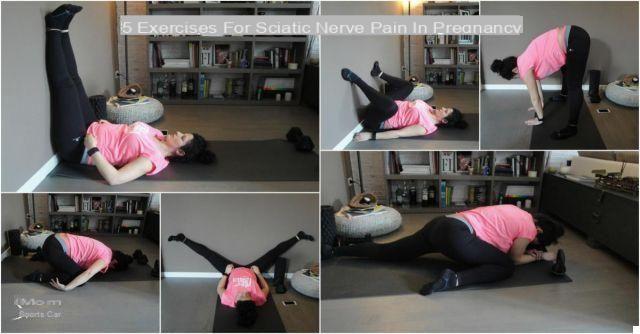
Introduction
Back pain is a very common symptom in pregnant women: generally, it appears from the fifth-sixth month of waiting and intensifies as the pregnancy progresses, when the changes undergone by the future mother's body become more relevant. In some cases it is a real one sciatica, and it can be relieved with specific exercises.
What is that
Sciatica, more correctly lumbosciatalgia, is a common problem of the spine. It is about a painful syndrome which involves the lumbar or lumbosacral part of the spine and radiates up to the legs. AND caused by irritation of the sciatic nerve which begins in the lumbar or lower spine and runs through the entire lower limb. It can cause pain that spreads from the buttocks and hip to the thigh and is deep and dull in some cases, while in others it is stabbing and sharp and can be of varying intensity.
Causes of Sciatica During Pregnancy
Typically, sciatic pain is caused by lumbar spine problems, such as a protruding disc or hernia. It can also be caused by bone changes, such as spinal stenosis, osteoarthritis, degenerative disc disease, spondylolisthesis. In fact, these are all situations that can put pressure on the sciatic nerve. Pregnancy is also a common cause of sciatica: it is estimated that 50 to 80% of pregnant women suffer from back pain. First of all the fault ofincrease in some hormones, such as relaxin, which can cause loosening and stretching of the ligaments, especially in the pelvic area. The weight of the child only makes matters worse as it puts additional pressure on the pelvis and hip joints. Occasionally, the position of the baby can also irritate the sciatic nerve.
Useful exercises
Massage, chiropractic care, and physical therapy can be used to treat sciatic pain during pregnancy. Self-treatment is also very useful, which includes exercises to help stretch the muscles of the leg, buttocks and hip, thus reducing the pressure on the sciatic nerve. Some women also find weightless exercises, such as swimming, useful - water helps support the baby's weight. Here are some very useful movements to relieve sciatic pain and discomfort during pregnancy.
Stretching at the table
This exercise helps to stretch the muscles of the back, buttocks and back of the legs.
Equipment needed: a table.
Muscles involved: lumbar, spinal stabilizers, hamstrings.
execution
- Stand in front of a table with your feet slightly wider than your hips.
- Lean forward with your hands resting on the table. Keep your arms straight and your back flat.
- Pull your hips away from the table until you feel a stretch in your lower back and back of your legs. You can also move your hips from side to side to increase the stretch in your lower back and hips.
- Maintain this position for 30 seconds to 1 minute.
- Repeat twice a day.
Hip flexor stretches
I Hip flexors are the muscles located along the front of the hip which help move the leg forward during movements such as walking. Many women have tight hip flexors during pregnancy. This can affect pelvic alignment and posture, causing pain.
Equipment needed: none.
Target muscles: hip flexors.
execution
- Get on all fours.
- Bring your right foot out in front of you so that your hip and knee form a 90 degree angle.
- Lift your torso, bringing your hands to your hips.
- Shift your weight forward onto the right knee (be careful not to go over the knee with the foot), stretching the left quadriceps, until you feel a stretch in the front of the back hip and leg.
- Hold for 30 seconds, then repeat on the other side.
Stretching of the piriformis muscle
The piriformis muscle is a deep muscle of the buttocks. When it is contracted, it can irritate the sciatic nerve. This stretch will help relieve tension in the muscle, helping to reduce sciatic pain.
Equipment needed: none.
Target muscle: piriformis.
execution
- Sit in a chair with your feet flat on the ground. Bend the left leg and rest the left ankle on the right knee.
- Keeping your back straight, lean forward until you feel a stretch through your buttocks.
- Hold the position for 30 seconds.
- Repeat on the other side.
- Perform as needed.
Pigeon yoga position
This popular yoga pose helps relieve the pain of sciatica during pregnancy. With a few minor modifications, it can be practiced comfortably throughout gestation.
Equipment needed: rolled towel or yoga block.
Target muscles: rotators and hip flexors.
execution
- Get on all fours.
- Slide your right knee forward so that it comes to rest in your hands. The leg is bent, with the right foot in front of the left groin.
- Slide the left leg back, straightening it and keeping the back of the foot on the floor. Place the rolled-up towel or yoga block under the right hip. This will facilitate the stretch and leave room for the tummy.
- Lean forward on the right leg. Slowly lower yourself to the ground, placing a pillow under your head and arms for support.
- Hold the position for 1 minute. Repeat on the other side. Repeat a few times throughout the day.


























